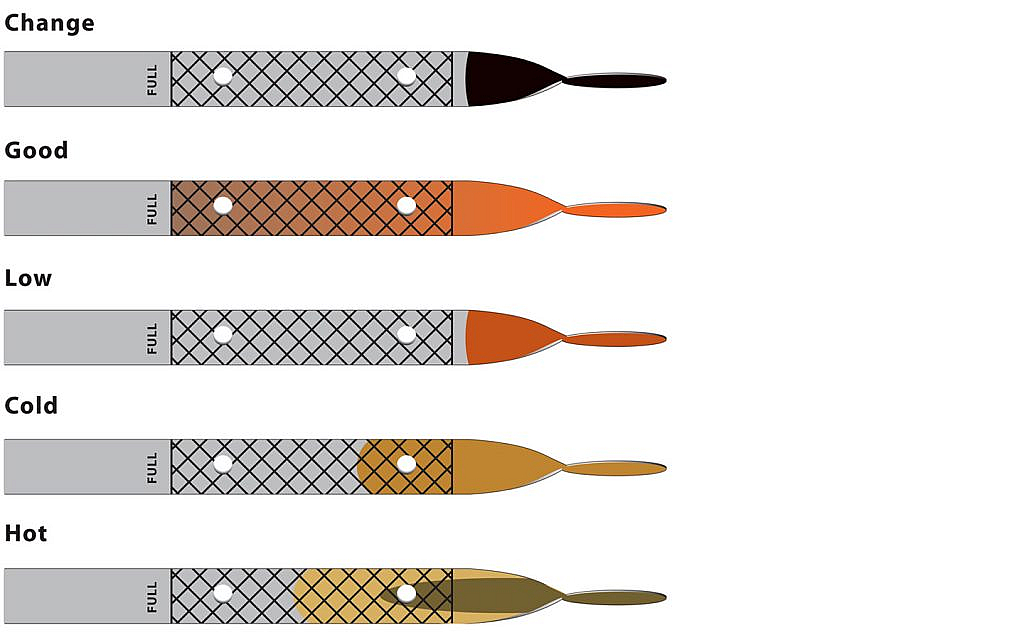When it comes to maintaining the health of your vehicle, few things are as critical as keeping an eye on your engine oil. The dipstick, a simple yet essential tool, serves as your first line of defense in ensuring your engine runs smoothly. In this guide, we will delve into the depths of what a good oil on a dipstick looks like, how to interpret its condition, and what steps you should take to keep your engine happy.
Understanding the Basics
Before we dive into the nitty-gritty, let’s clarify what a dipstick is and why it matters. The dipstick is a metal or plastic rod with markings that indicate the oil level in your engine. Regularly checking your dipstick can prevent catastrophic engine failures and keep your vehicle running efficiently.
Why is Oil Important?
Your engine oil lubricates the moving parts of your engine, reduces friction, and helps dissipate heat. Over time, oil can break down, become contaminated, or evaporate. This is where the dipstick comes into play.
How to Check the Oil Level
- Park on Level Ground: Always check your oil level on a level surface to get an accurate reading.
- Turn Off the Engine: Allow the engine to cool for a few minutes before checking the oil.
- Locate the Dipstick: The dipstick is usually marked with a bright handle, often yellow or orange.
- Remove and Wipe: Pull the dipstick out and wipe it clean with a lint-free cloth.
- Reinsert and Remove: Insert the dipstick back into the tube and then pull it out again to check the oil level.
Interpreting the Oil Condition
Now that you’ve got the basics down, let’s talk about what you should see on that dipstick. A good oil reading is more than just a number; it’s about the oil’s color, texture, and viscosity.
Color Matters
- Amber to Light Brown: New oil is usually amber. As it ages, it may turn light brown. This is normal.
- Dark Brown or Black: If the oil appears dark or black, it may be time for an oil change.
- Milky or Foamy: If your oil looks milky, it could indicate coolant contamination—an issue that requires immediate attention.
Texture and Viscosity
When you rub a drop of oil between your fingers, it should feel slick and smooth. If it feels gritty or has particles, it could indicate dirt or sludge buildup.
What If the Oil is Low or Dirty?
Finding low or dirty oil on your dipstick isn’t the end of the world, but it does require action:
- Low Oil Level: If your oil level is below the minimum mark, top it up with the appropriate oil type. Refer to your vehicle’s manual for specifications.
- Dirty Oil: If the oil appears dirty or gritty, it’s time for an oil change. Regular oil changes promote a healthy engine.
Common Myths About Engine Oil
As with many things in life, misinformation often spreads like wildfire. Let’s debunk some common myths surrounding engine oil:
- Myth 1: You only need to change your oil every 5,000 miles.
Fact: Depending on your vehicle and driving conditions, you may need to change your oil more frequently. Always consult your owner’s manual. - Myth 2: All oil is the same.
Fact: Different engines require different oil types (synthetic, semi-synthetic, or conventional). Always use the oil specified by the manufacturer. - Myth 3: Oil color is the only indicator of its health.
Fact: While color is important, viscosity and texture are equally crucial in determining oil condition.
When to Seek Professional Help
If you’re ever in doubt about the condition of your oil, don’t hesitate to consult a professional mechanic. They can perform a complete oil analysis and offer recommendations tailored to your vehicle’s needs.
Maintaining good oil on your dipstick is not just about checking levels; it’s about ensuring the longevity and efficiency of your engine. By regularly monitoring your oil’s condition and debunking common myths, you can keep your vehicle running smoothly for years to come. Remember, a little diligence goes a long way in auto maintenance!
Quick Tips for Oil Maintenance
- Check your oil level monthly.
- Change your oil as recommended by the manufacturer.
- Use high-quality oil suitable for your engine.
- Keep an eye out for leaks or unusual engine noises.
Be proactive, stay informed, and give your engine the care it deserves. Happy driving!

